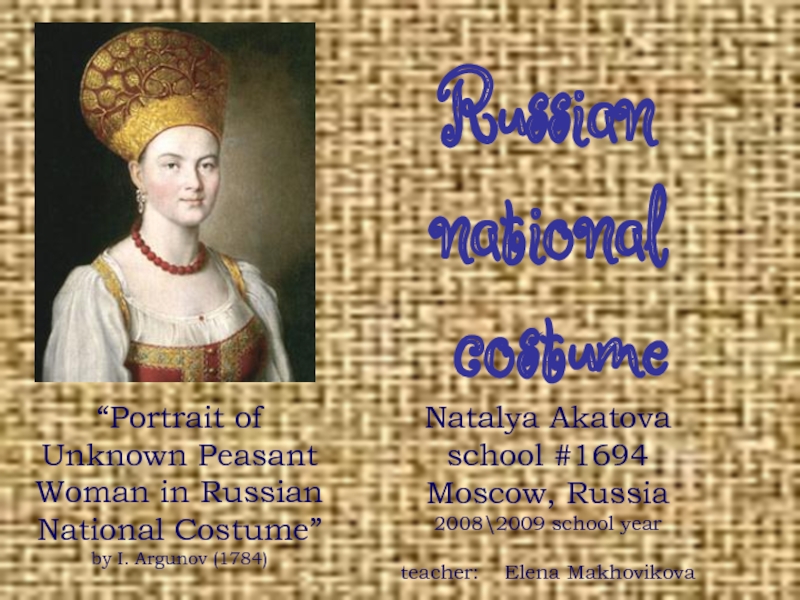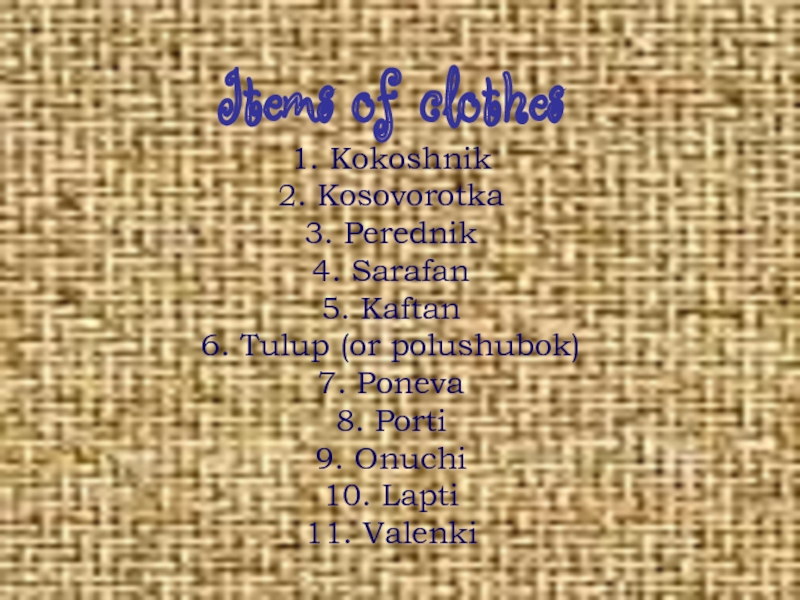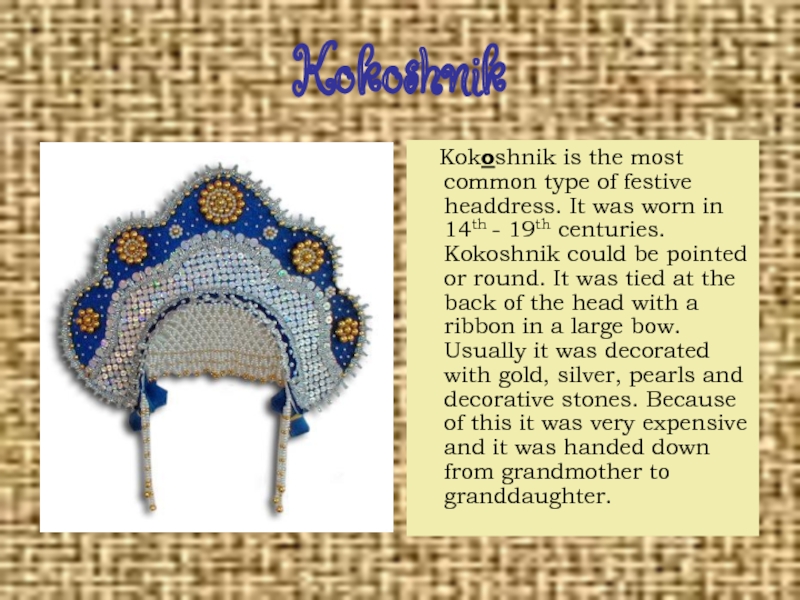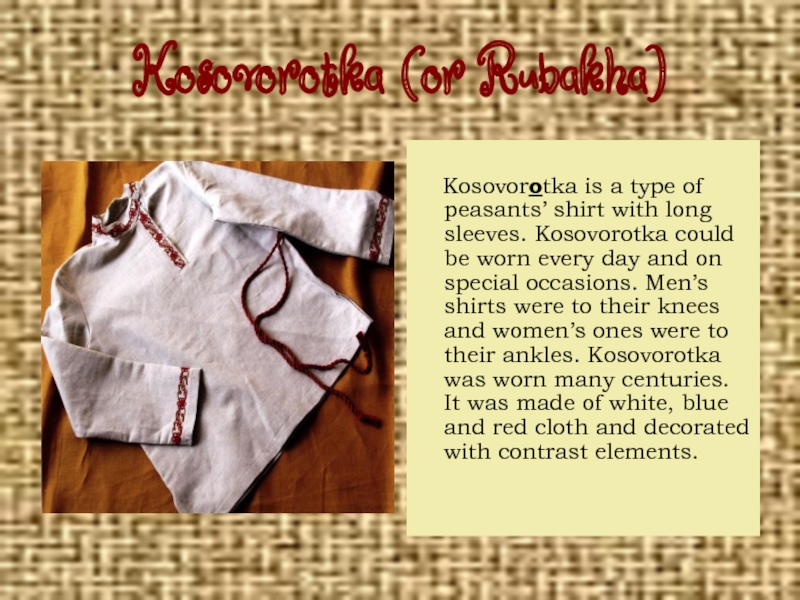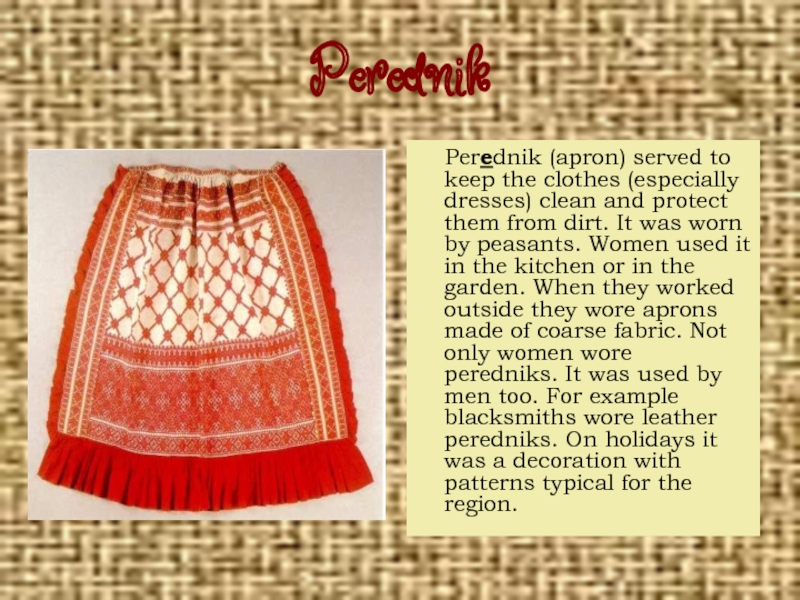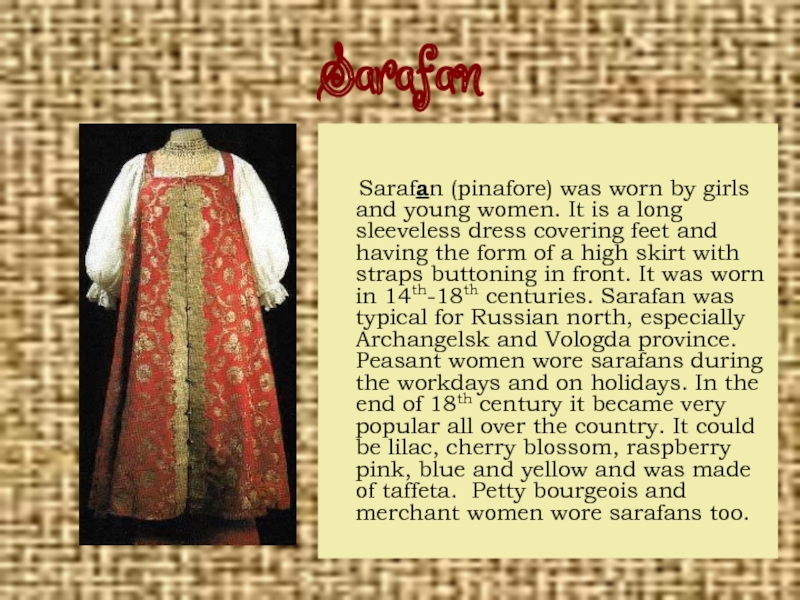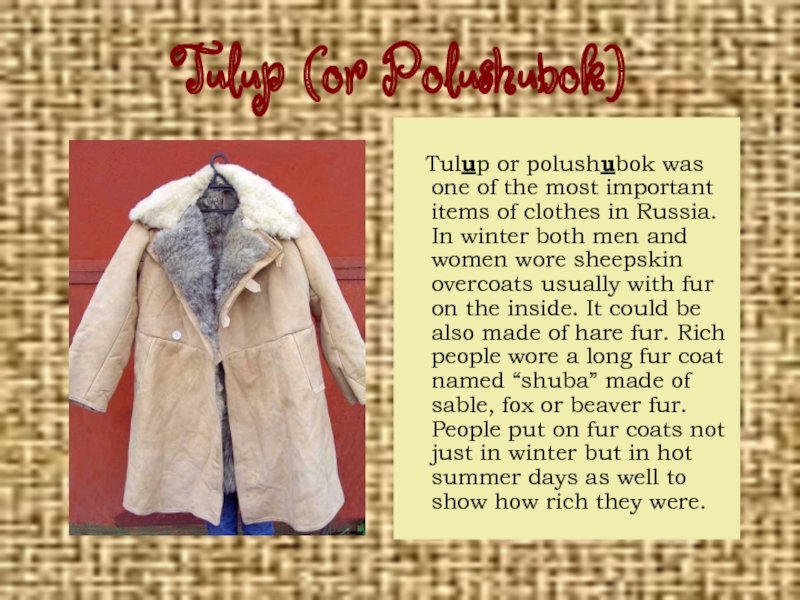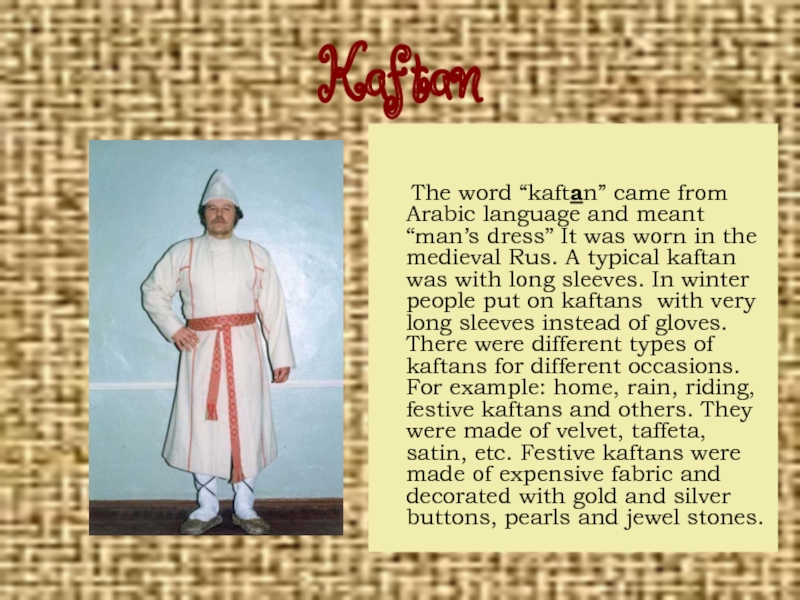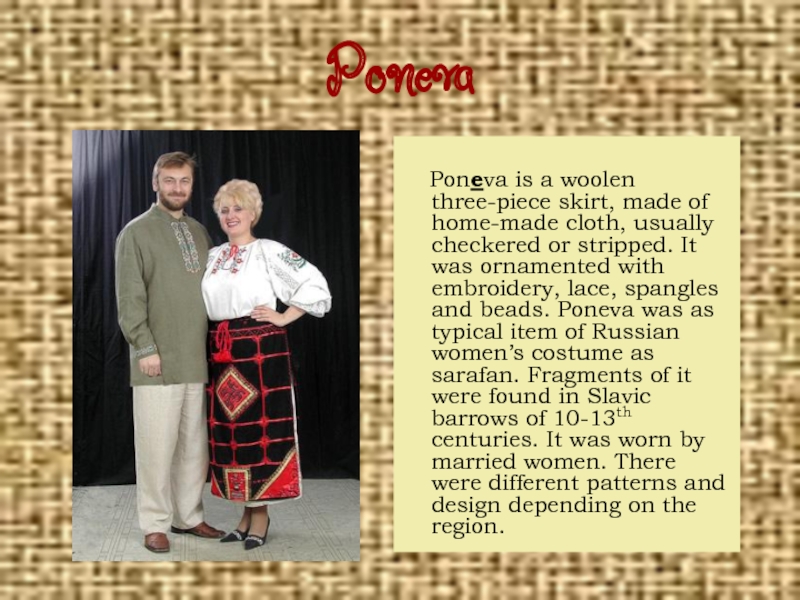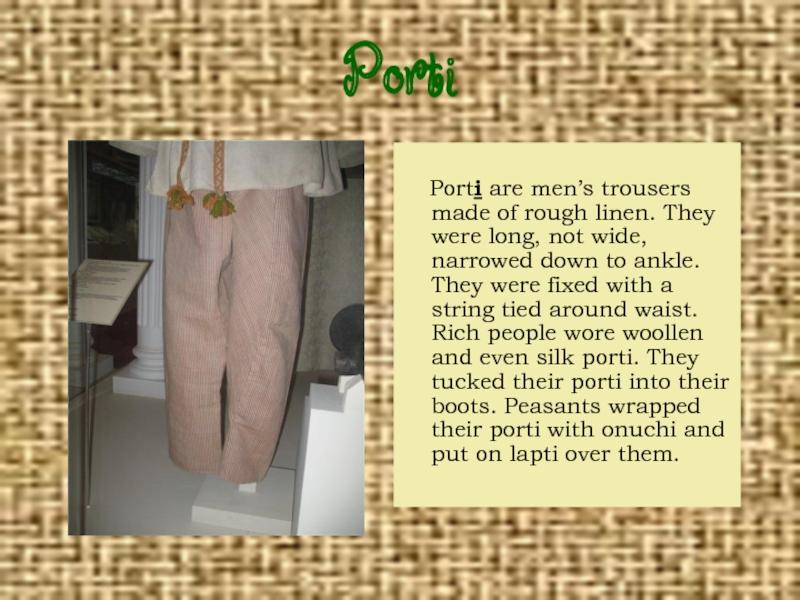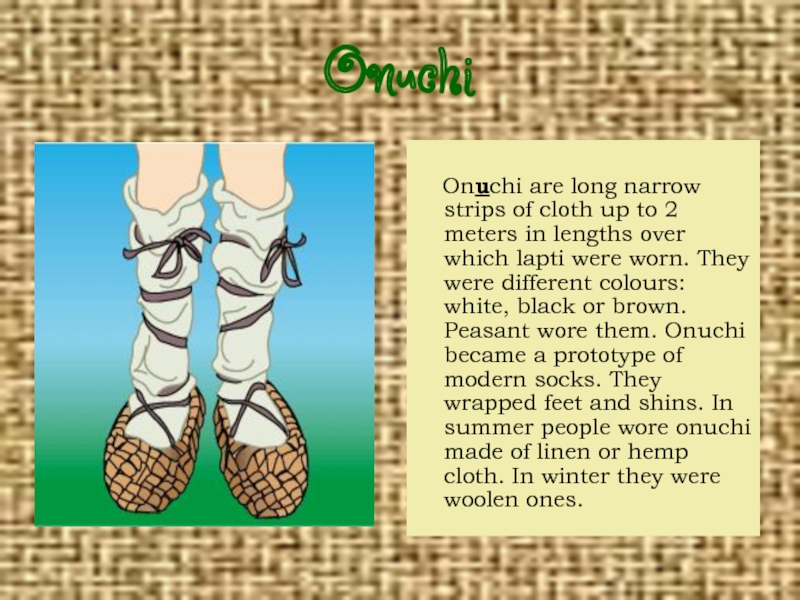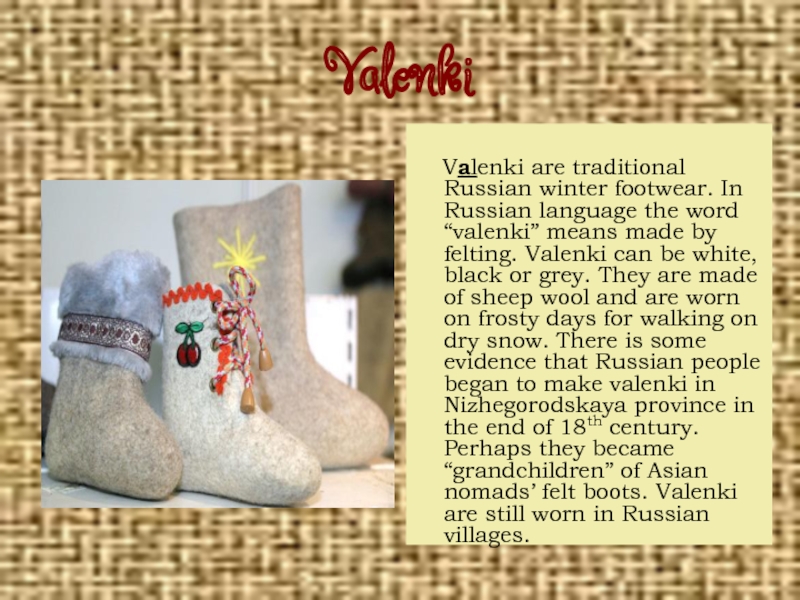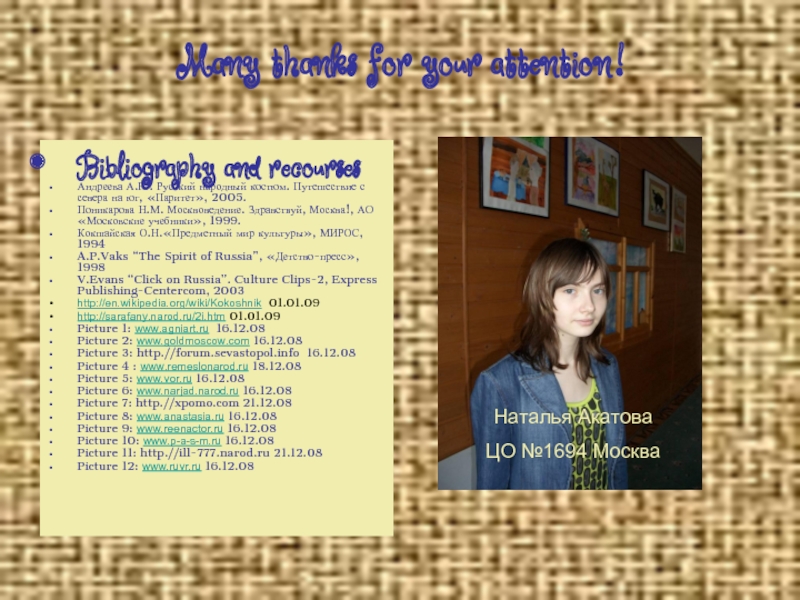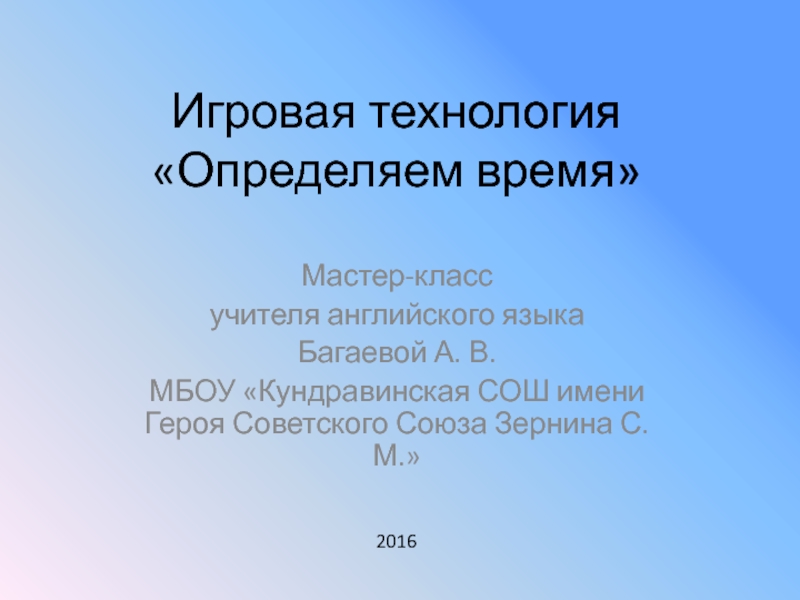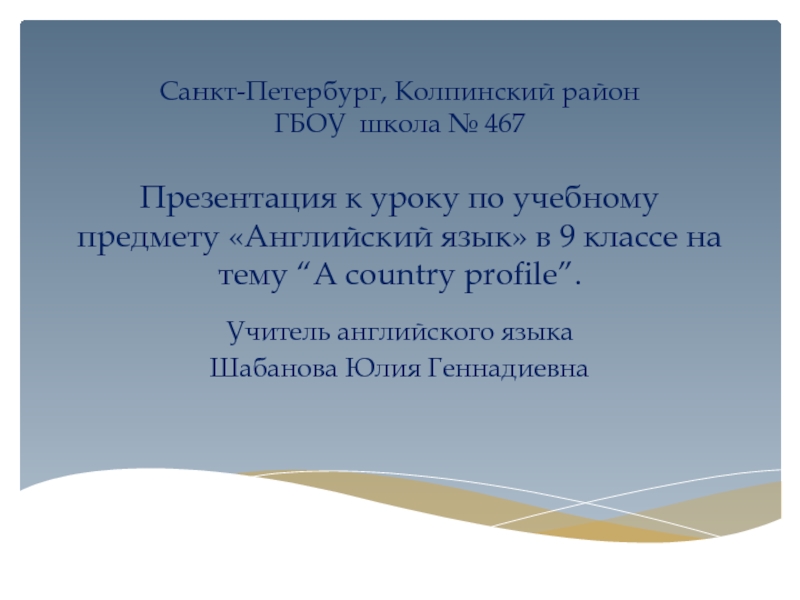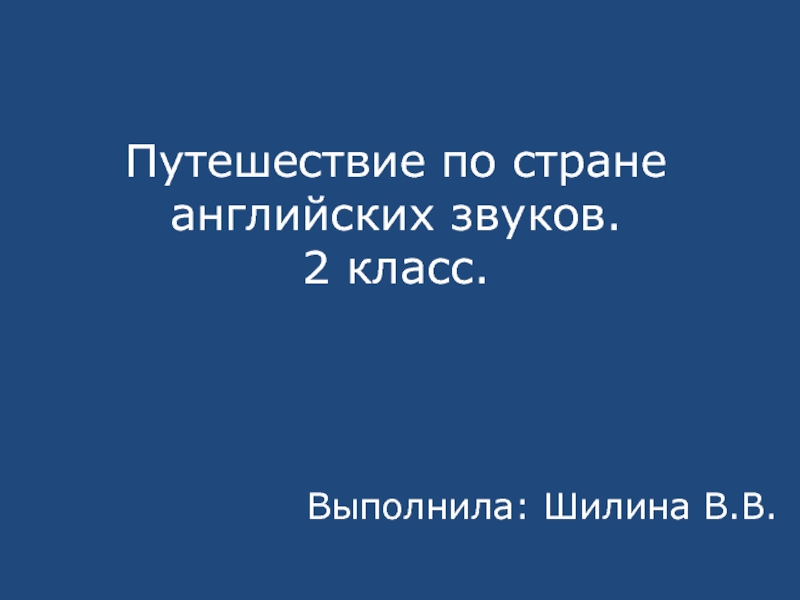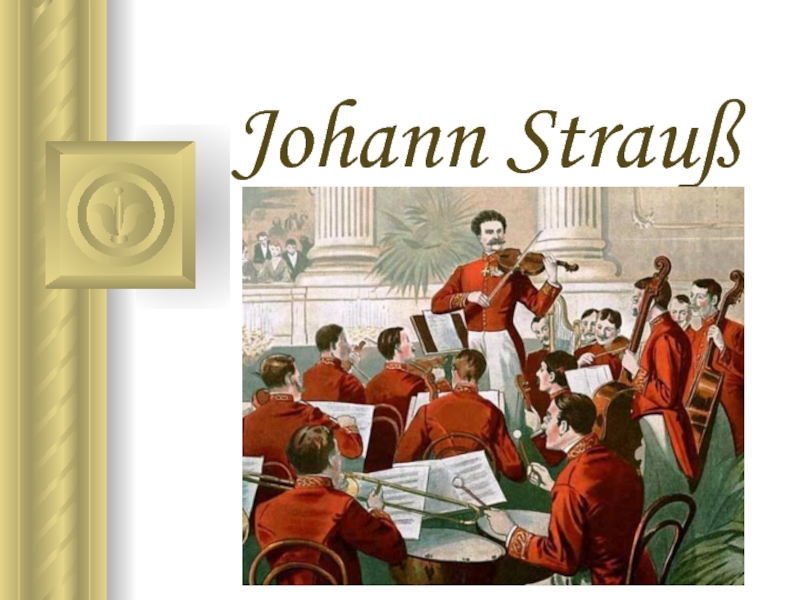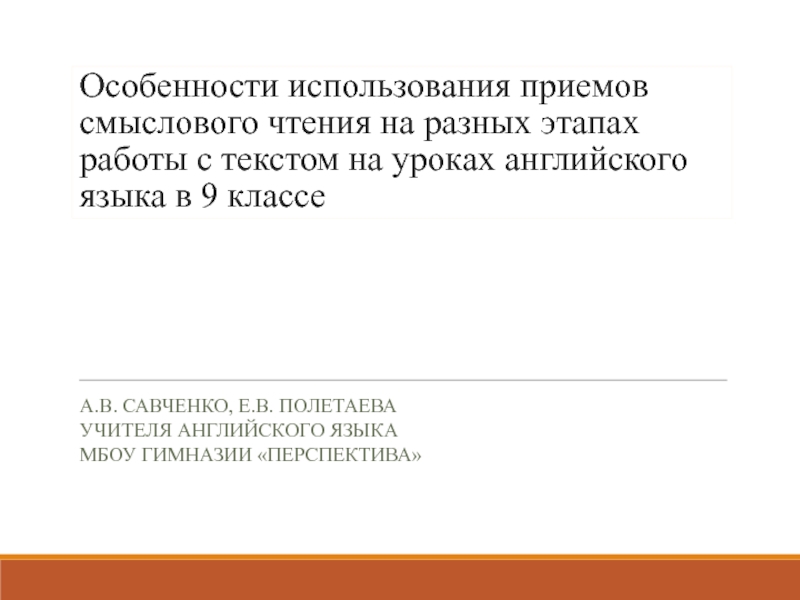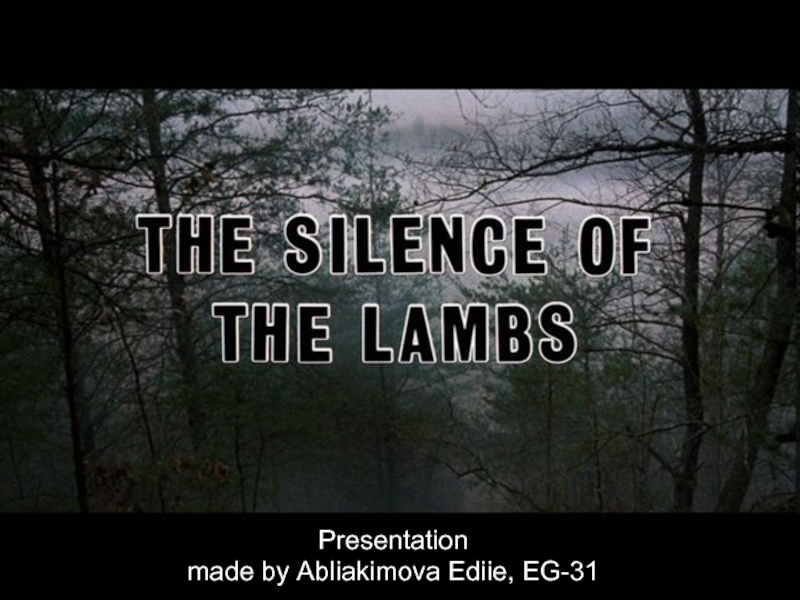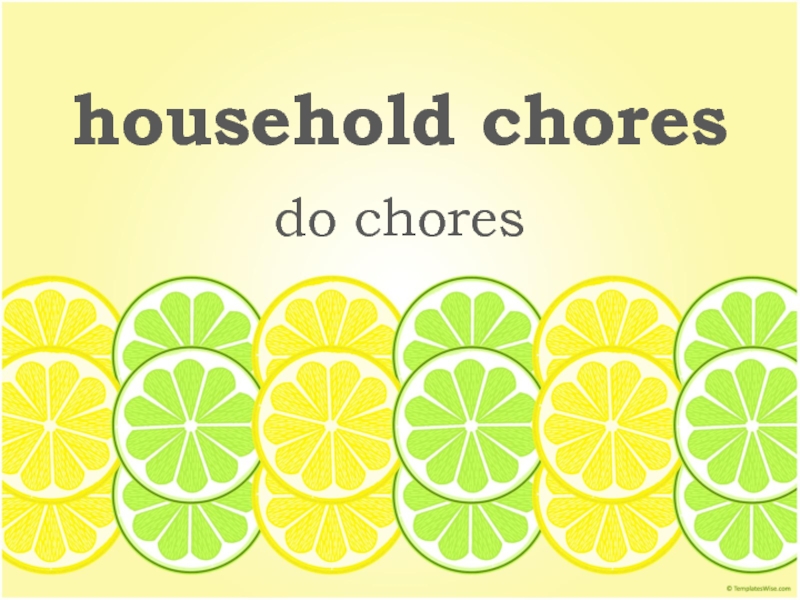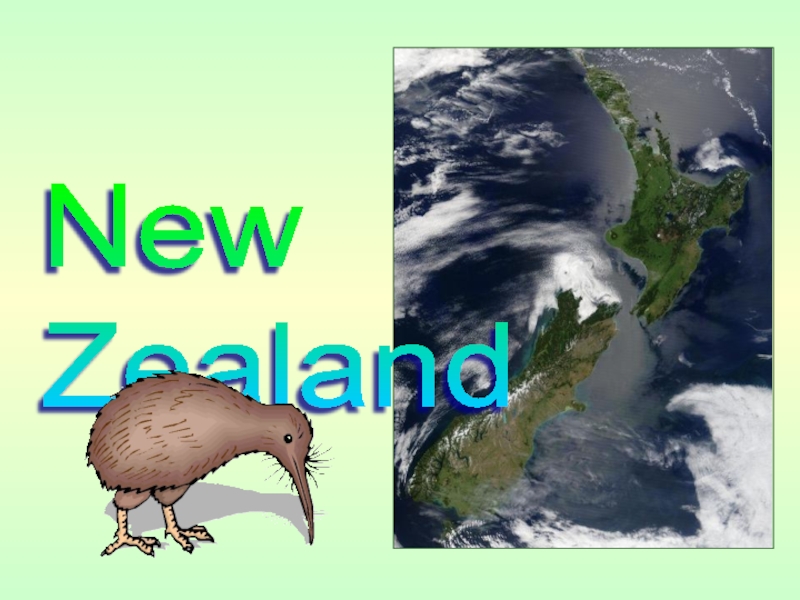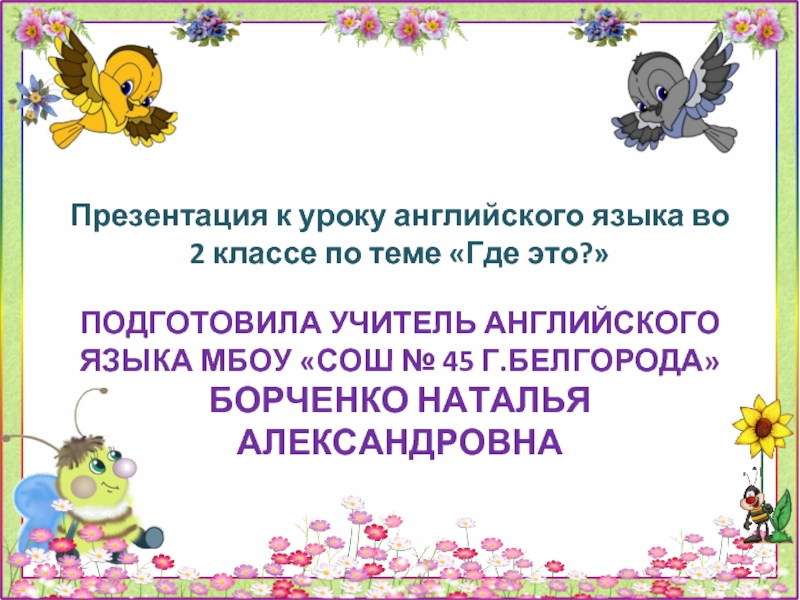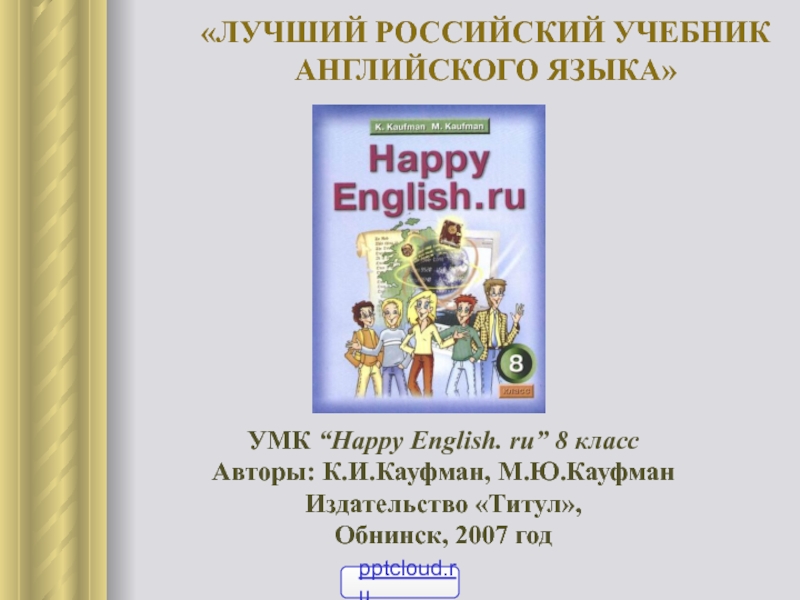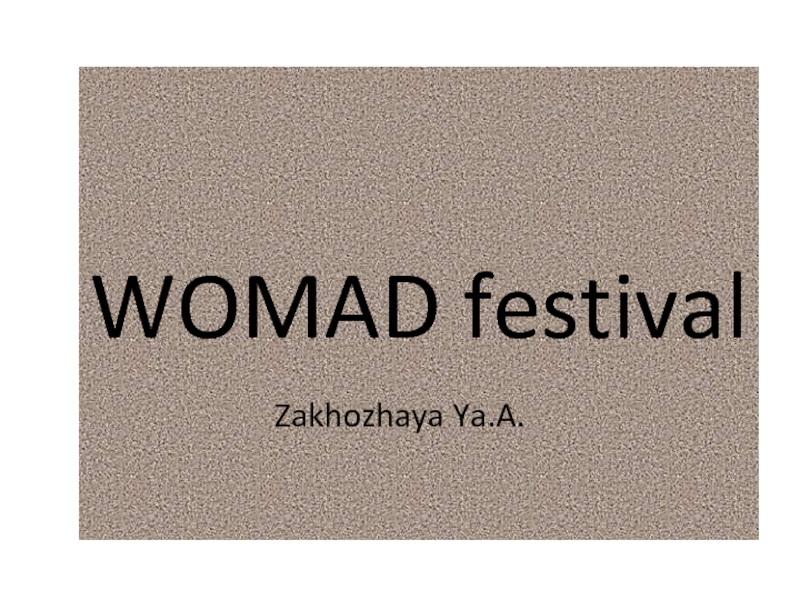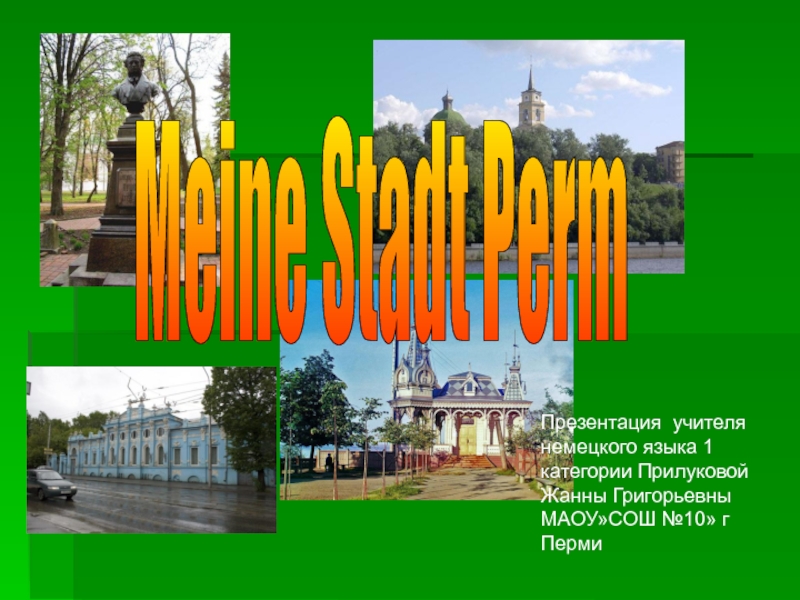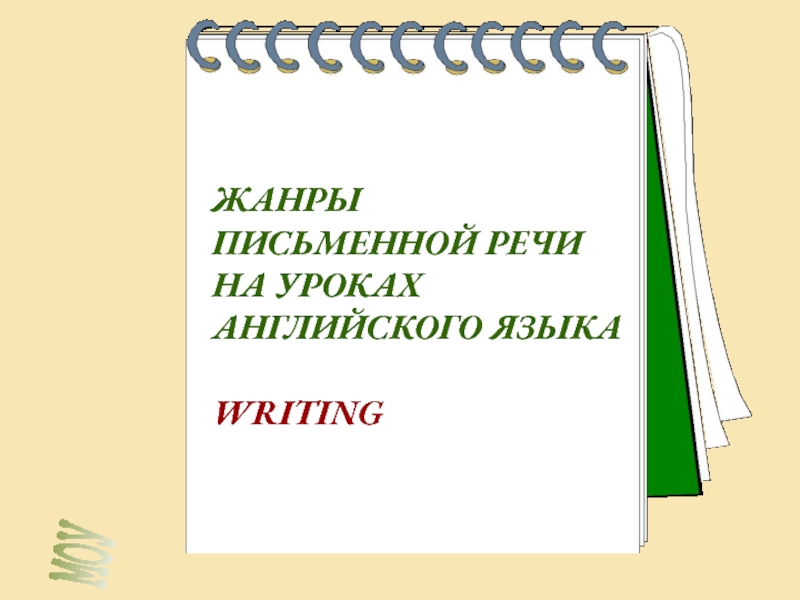Разделы презентаций
- Разное
- Английский язык
- Астрономия
- Алгебра
- Биология
- География
- Геометрия
- Детские презентации
- Информатика
- История
- Литература
- Математика
- Медицина
- Менеджмент
- Музыка
- МХК
- Немецкий язык
- ОБЖ
- Обществознание
- Окружающий мир
- Педагогика
- Русский язык
- Технология
- Физика
- Философия
- Химия
- Шаблоны, картинки для презентаций
- Экология
- Экономика
- Юриспруденция
Russian national costume
Содержание
- 1. Russian national costume
- 2. Items of clothes 1. Kokoshnik 2. Kosovorotka
- 3. Kokoshnik Kokoshnik is the most common
- 4. Kosovorotka (or Rubakha) Kosovorotka
- 5. Perednik Perednik (apron) served to
- 6. Sarafan
- 7. Tulup (or Polushubok) Tulup
- 8. Kaftan
- 9. Poneva Poneva is a
- 10. Porti Porti are men’s
- 11. Lapti (bastshoes) Lapti are bast
- 12. Onuchi Onuchi are
- 13. Valenki Valenki are traditional
- 14. Many thanks for your attention!Bibliography and recoursesАндреева
- 15. Скачать презентанцию
Items of clothes 1. Kokoshnik 2. Kosovorotka 3. Perednik 4. Sarafan 5. Kaftan 6. Tulup (or polushubok) 7. Poneva 8. Porti 9. Onuchi 10. Lapti 11. Valenki
Слайды и текст этой презентации
Слайд 1 Russian national costume Natalya Akatova school #1694 Moscow, Russia 2008\2009 school year teacher: Elena
Makhovikova
I. Argunov (1784)Слайд 2Items of clothes 1. Kokoshnik 2. Kosovorotka 3. Perednik 4. Sarafan 5. Kaftan 6. Tulup (or
polushubok)
7. Poneva
8. Porti
9. Onuchi
10. Lapti
11. Valenki
Слайд 3Kokoshnik
Kokoshnik is the most common type of festive
headdress. It was worn in 14th - 19th centuries. Kokoshnik
could be pointed or round. It was tied at the back of the head with a ribbon in a large bow. Usually it was decorated with gold, silver, pearls and decorative stones. Because of this it was very expensive and it was handed down from grandmother to granddaughter.Слайд 4Kosovorotka (or Rubakha)
Kosovorotka is a type
of peasants’ shirt with long sleeves. Kosovorotka could be worn
every day and on special occasions. Men’s shirts were to their knees and women’s ones were to their ankles. Kosovorotka was worn many centuries. It was made of white, blue and red cloth and decorated with contrast elements.Слайд 5Perednik
Perednik (apron) served to keep the clothes
(especially dresses) clean and protect them from dirt. It was
worn by peasants. Women used it in the kitchen or in the garden. When they worked outside they wore aprons made of coarse fabric. Not only women wore peredniks. It was used by men too. For example blacksmiths wore leather peredniks. On holidays it was a decoration with patterns typical for the region.Слайд 6Sarafan
Sarafan (pinafore) was
worn by girls and young women. It is a long
sleeveless dress covering feet and having the form of a high skirt with straps buttoning in front. It was worn in 14th-18th centuries. Sarafan was typical for Russian north, especially Archangelsk and Vologda province. Peasant women wore sarafans during the workdays and on holidays. In the end of 18th century it became very popular all over the country. It could be lilac, cherry blossom, raspberry pink, blue and yellow and was made of taffeta. Petty bourgeois and merchant women wore sarafans too.Слайд 7Tulup (or Polushubok)
Tulup or polushubok was
one of the most important items of clothes in Russia.
In winter both men and women wore sheepskin overcoats usually with fur on the inside. It could be also made of hare fur. Rich people wore a long fur coat named “shuba” made of sable, fox or beaver fur. People put on fur coats not just in winter but in hot summer days as well to show how rich they were.Слайд 8Kaftan
The word
“kaftan” came from Arabic language and meant “man’s dress” It
was worn in the medieval Rus. A typical kaftan was with long sleeves. In winter people put on kaftans with very long sleeves instead of gloves. There were different types of kaftans for different occasions. For example: home, rain, riding, festive kaftans and others. They were made of velvet, taffeta, satin, etc. Festive kaftans were made of expensive fabric and decorated with gold and silver buttons, pearls and jewel stones.Слайд 9Poneva
Poneva is a woolen three-piece skirt,
made of home-made cloth, usually checkered or stripped. It was
ornamented with embroidery, lace, spangles and beads. Poneva was as typical item of Russian women’s costume as sarafan. Fragments of it were found in Slavic barrows of 10-13th centuries. It was worn by married women. There were different patterns and design depending on the region.Слайд 10Porti
Porti are men’s trousers made of
rough linen. They were long, not wide, narrowed down to
ankle. They were fixed with a string tied around waist. Rich people wore woollen and even silk porti. They tucked their porti into their boots. Peasants wrapped their porti with onuchi and put on lapti over them.Слайд 11Lapti (bastshoes)
Lapti are bast shoes which were
worn over homespun onuchi (narrow strips of cotton). They were
spread in Rus in old times. Lapti were used in the countryside up to 1930s. They were made of lime-tree, elm, or birch bast. Lapti were tied to legs with cords twisted from the same bast. They were not made in all regions but they were worn everywhere. Lapti were a type of “currency” and an item of trade.Слайд 12Onuchi
Onuchi are long narrow strips
of cloth up to 2 meters in lengths over which
lapti were worn. They were different colours: white, black or brown. Peasant wore them. Onuchi became a prototype of modern socks. They wrapped feet and shins. In summer people wore onuchi made of linen or hemp cloth. In winter they were woolen ones.Слайд 13Valenki
Valenki are traditional Russian winter footwear.
In Russian language the word “valenki” means made by felting.
Valenki can be white, black or grey. They are made of sheep wool and are worn on frosty days for walking on dry snow. There is some evidence that Russian people began to make valenki in Nizhegorodskaya province in the end of 18th century. Perhaps they became “grandchildren” of Asian nomads’ felt boots. Valenki are still worn in Russian villages.Слайд 14Many thanks for your attention!
Bibliography and recourses
Андреева А.Ю. Русский народный
костюм. Путешествие с севера на юг, «Паритет», 2005.
Поникарова Н.М. Москвоведение.
Здравствуй, Москва!, АО «Московские учебники», 1999.Кокшайская О.Н.«Предметный мир культуры», МИРОС, 1994
A.P.Vaks “The Spirit of Russia”, «Детство-пресс», 1998
V.Evans “Click on Russia”. Culture Clips-2, Express Publishing-Centercom, 2003
http://en.wikipedia.org/wiki/Kokoshnik 01.01.09
http://sarafany.narod.ru/2i.htm 01.01.09
Picture 1: www.agniart.ru 16.12.08
Picture 2: www.goldmoscow.com 16.12.08
Picture 3: http.//forum.sevastopol.info 16.12.08
Picture 4 : www.remeslonarod.ru 18.12.08
Picture 5: www.vor.ru 16.12.08
Picture 6: www.narjad.narod.ru 16.12.08
Picture 7: http.//xpomo.com 21.12.08
Picture 8: www.anastasia.ru 16.12.08
Picture 9: www.reenactor.ru 16.12.08
Picture 10: www.p-a-s-m.ru 16.12.08
Picture 11: http.//ill-777.narod.ru 21.12.08
Picture 12: www.ruvr.ru 16.12.08
Наталья Акатова
ЦО №1694 Москва
Теги
